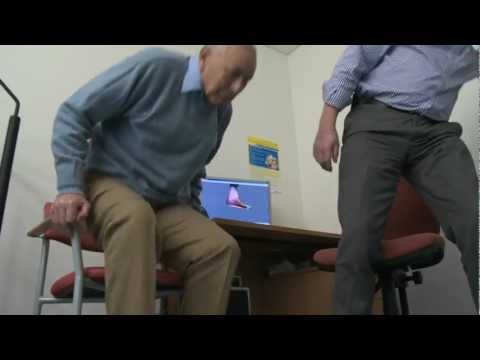Prosthetist Job: Description & Salary

Prosthetist Job Description Template
Prosthetist Job Description: A prosthetist is a healthcare professional who specializes in designing, creating, and fitting artificial limbs, also known as prosthetics, for individuals who have lost a limb due to injury, disease, or congenital conditions. These professionals work closely with patients to understand their specific needs and goals in order to develop customized prosthetic solutions. One important aspect of a prosthetist’s job is the assessment and measurement of the patient’s residual limb. They carefully evaluate the patient’s physical condition, mobility, and lifestyle to determine the most appropriate type of prosthetic limb. Using advanced technology and materials, prosthetists create prosthetic limbs that closely resemble natural limbs in terms of appearance, function, and comfort. Another crucial task performed by prosthetists is the fitting and alignment of the prosthetic limb. They make necessary adjustments to ensure proper fit, alignment, and function. Prosthetists also provide guidance and education to patients on how to use and maintain their prosthetic limbs effectively. Prosthetists often collaborate with other healthcare professionals, such as physical therapists and occupational therapists, to ensure optimal patient outcomes. They may also be involved in ongoing research and development of new prosthetic technologies and techniques. In summary, a prosthetist plays a vital role in improving the quality of life for individuals with limb loss. They apply their expertise in designing, creating, and fitting prosthetic limbs to help patients regain mobility, independence, and confidence in their daily activities.Prosthetist Responsibilities
Prosthetist Requirements
How Much Does A Prosthetist Make?
Prosthetist Salary
| Experience Level | Average Annual Salary |
|---|---|
| Entry Level | $60,000 |
| Mid-Career | $70,000 |
| Experienced | $85,000 |
| Late Career | $95,000 |
A Prosthetist is a healthcare professional who specializes in designing, fitting, and providing artificial limbs or prostheses for individuals who have lost a limb or are born without limbs. Prosthetists work closely with patients to assess their needs, create customized prosthetic devices, and provide ongoing care and support. In terms of salary, the average annual salary for a Prosthetist can vary depending on their experience level. Entry-level Prosthetists earn an average of $60,000 per year, while those in mid-career can expect around $70,000. Experienced Prosthetists earn an average salary of $85,000, and those in late career stages can earn up to $95,000 per year. It is important to note that these figures may vary based on factors such as location, education, and additional certifications.
Prosthetist Salaries by Country
Top Paying Countries for Prosthetist
| Country | Average Salary (USD) |
|---|---|
| United States | 85,000 |
| Canada | 75,000 |
| Australia | 70,000 |
| Switzerland | 65,000 |
| Germany | 60,000 |
A prosthetist is a healthcare professional who specializes in designing and fitting prosthetic limbs for individuals with limb loss or limb abnormalities. The average salaries for prosthetists vary across different countries. According to the data provided in the table above, the top paying countries for prosthetists are the United States, Canada, Australia, Switzerland, and Germany.
A video on the topic Prosthetist
Video Source : NHS Health CareersInterview Questions for Prosthetist
1. What is the role of a Prosthetist?
A prosthetist is a healthcare professional who specializes in designing, fitting, and providing prosthetic limbs or devices to individuals who have lost a limb or are born with limb deficiencies.
2. What qualifications are required to become a Prosthetist?
To become a prosthetist, one must typically complete a bachelor’s degree in prosthetics and orthotics from an accredited university or college. Additionally, they must complete a clinical residency program and obtain certification from a recognized professional organization.
3. How do you assess a patient’s needs for a prosthetic limb?
Assessing a patient’s needs for a prosthetic limb involves conducting a thorough evaluation of their physical condition, mobility, and functional abilities. This may include taking measurements, conducting physical examinations, and discussing their lifestyle and goals.
4. What factors do you consider when designing a prosthetic limb?
When designing a prosthetic limb, factors such as the patient’s anatomical structure, functional requirements, activity level, and personal preferences are taken into consideration. The prosthetist also considers the materials and technology available to create a customized and comfortable prosthesis.
5. How do you ensure a proper fit for a prosthetic limb?
To ensure a proper fit for a prosthetic limb, the prosthetist uses various techniques such as taking precise measurements, using computer-aided design and manufacturing technology, and conducting multiple fittings and adjustments. They also consider the patient’s comfort, alignment, and biomechanics during the fitting process.
6. How do you educate patients on the use and maintenance of their prosthetic limb?
Prosthetists educate patients on the use and maintenance of their prosthetic limb through comprehensive training sessions. They provide instructions on how to put on and take off the prosthesis, how to use it for various activities, and how to care for and clean it. They also offer guidance on recognizing and addressing any potential issues or complications.
7. What are some common challenges faced by prosthetists?
Some common challenges faced by prosthetists include dealing with individual patient needs and expectations, managing changes in the patient’s physical condition or lifestyle over time, and keeping up with advancements in prosthetic technology and materials. Additionally, prosthetists may face challenges related to insurance coverage and reimbursement for prosthetic services.
8. How do you stay updated on the latest advancements in prosthetics?
To stay updated on the latest advancements in prosthetics, prosthetists attend conferences, workshops, and continuing education courses. They also participate in professional organizations and network with colleagues to exchange knowledge and information. Additionally, they keep themselves informed about research and developments in the field through scientific literature and online resources.
9. How do you ensure patient satisfaction with their prosthetic limb?
Prosthetists ensure patient satisfaction with their prosthetic limb by actively involving the patient in the design and fitting process. They listen to the patient’s needs and preferences, address their concerns, and make necessary adjustments to optimize the fit and function of the prosthesis. Regular follow-up appointments and ongoing support are also provided to address any issues or challenges that may arise.
10. What is the most rewarding aspect of being a Prosthetist?
For many prosthetists, the most rewarding aspect of their profession is witnessing the positive impact they can have on their patients’ lives. Helping individuals regain mobility, independence, and confidence through the use of a well-fitted and functional prosthetic limb brings a sense of fulfillment and satisfaction.






